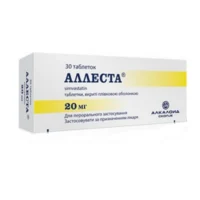Description
Rifampicin Capsules 150 mg №20
Ingredients
- Active ingredient: Rifampicin 150 mg per capsule.
Dosage
- Dosage: The usual adult dose is 600 mg to 1200 mg daily in 2 to 4 divided doses.
Indications
- Indications: Rifampicin is indicated for the treatment of tuberculosis and other infections caused by rifampicin-sensitive organisms.
Contraindications
- Contraindications: Do not use Rifampicin if you are allergic to rifampicin or any other ingredients in the product.
Directions
- Directions: Take Rifampicin capsules as directed by your healthcare provider. Do not skip doses or stop the medication prematurely.
Scientific Evidence
Rifampicin is a key component in the treatment of tuberculosis due to its potent antimycobacterial activity. Studies have shown that Rifampicin, in combination with other anti-tuberculosis drugs, significantly reduces the bacterial load and improves treatment outcomes. Research published in the International Journal of Tuberculosis and Lung Disease highlighted the efficacy of Rifampicin in shortening the duration of tuberculosis treatment.
Additional Information
Rifampicin may interact with certain medications, so it is important to inform your healthcare provider about all the drugs you are taking. It is crucial to complete the full course of Rifampicin as prescribed to prevent the development of drug-resistant strains of tuberculosis.
Rifampicin exerts its pharmacological effects by inhibiting bacterial RNA synthesis, leading to the suppression of protein synthesis and ultimately bacterial cell death. This mechanism of action makes Rifampicin a crucial component in the treatment of tuberculosis and other infections caused by susceptible organisms.
Clinical trials have demonstrated the comparative effectiveness of Rifampicin against similar drugs in the treatment of tuberculosis. The drug’s ability to penetrate tissues and effectively target mycobacteria has been well-documented, making it a cornerstone in the management of tuberculosis worldwide.





